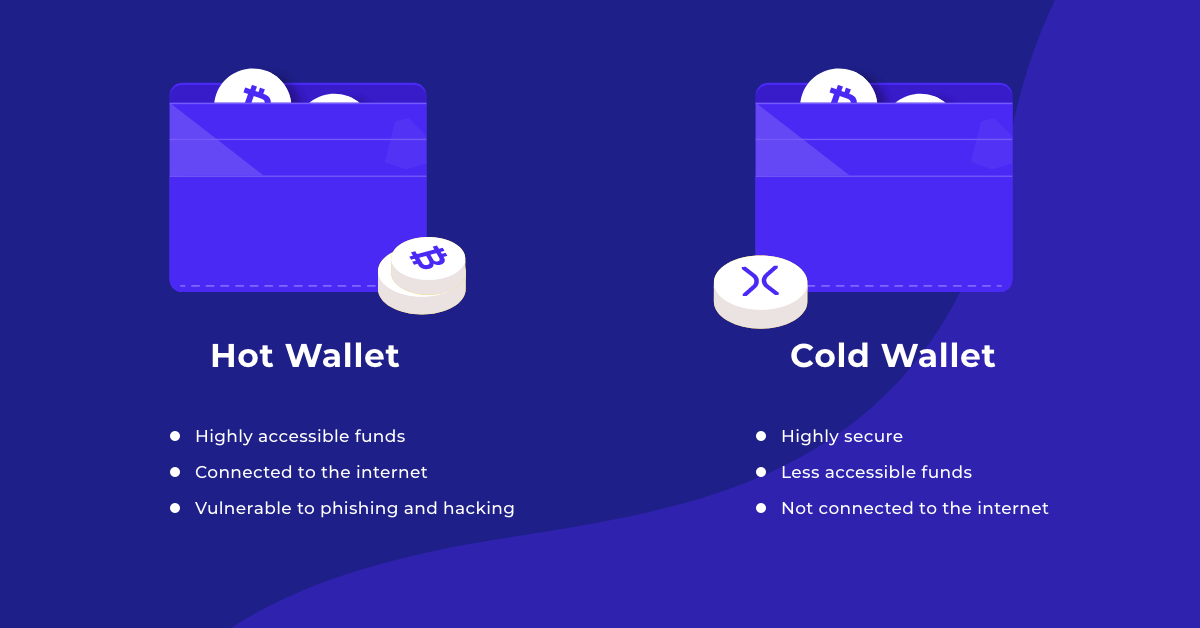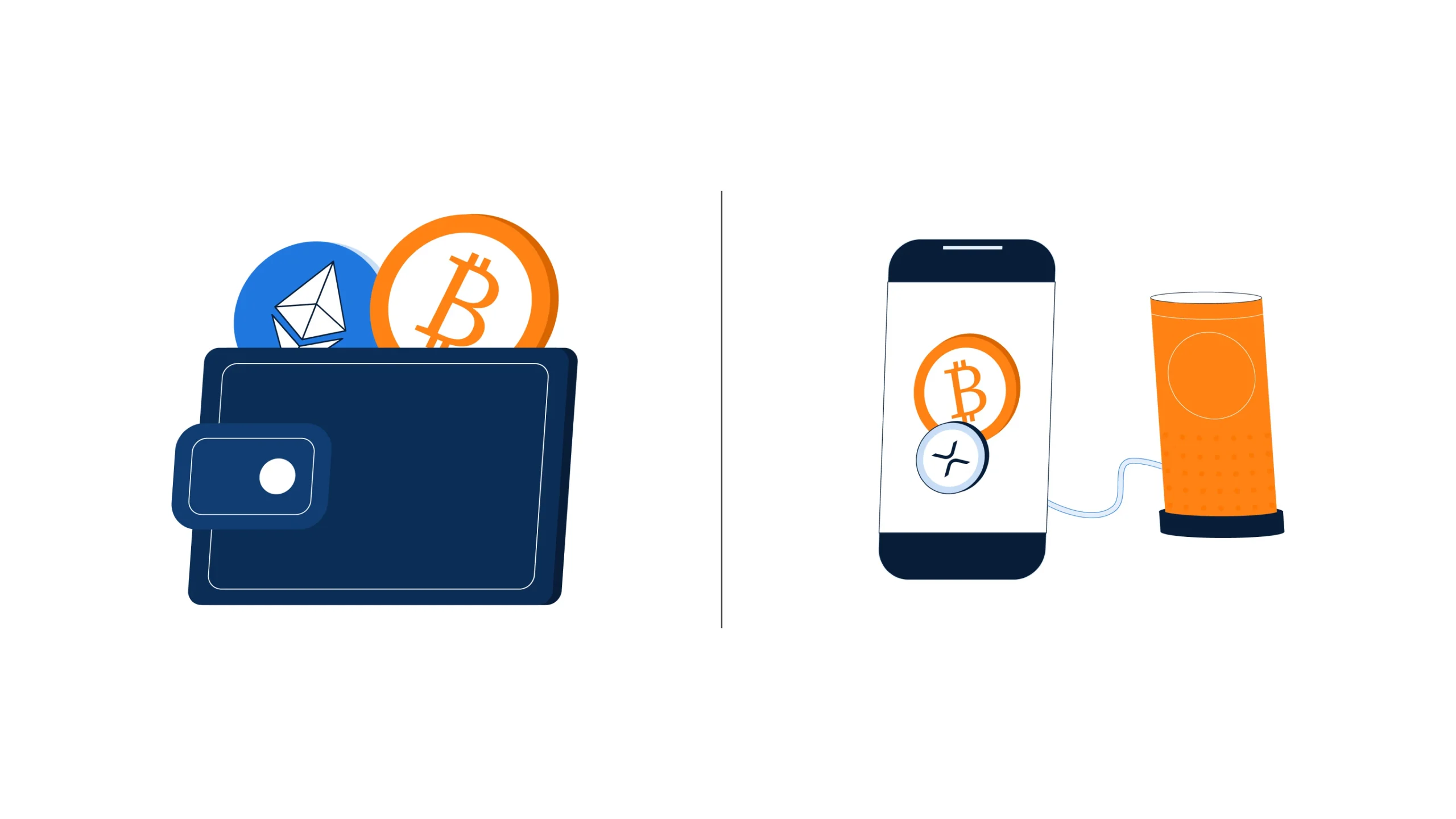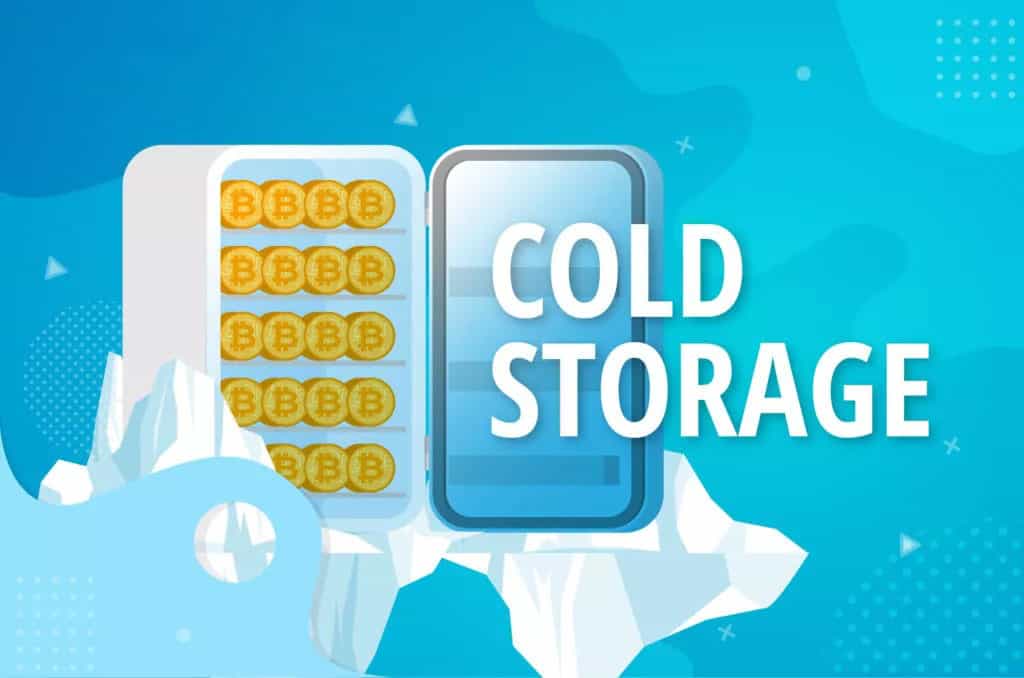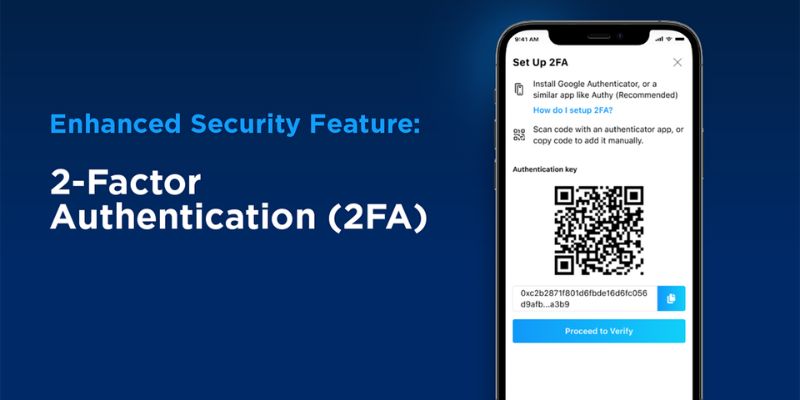Choosing a reputable crypto wallet for beginners isn’t just smart; it’s a must. You wouldn’t leave your cash flying around, would you? Dive deep into the world of digital money and learn why picking the right wallet matters so much. Walk through the types, the safety measures needed, and how to set one up with ease. Let’s kick off your crypto journey on solid ground, with a wallet that keeps your digital coins as safe as a treasure chest. Ready? Let’s get started.
Understanding Cryptocurrency Wallets for Beginners
What is a Crypto Wallet?
Think of a crypto wallet like a keychain. It holds keys, but for digital money. These aren’t regular keys; they’re special digital codes called “private keys.” They let you send and get digital currency. Keeping these safe is a wallet’s main job. Imagine a mailbox where the whole world can drop a letter (digital money), but only you can take it out with your key (private key). That’s how crypto wallets work.
Crypto wallets come in different shapes and sizes. They can be programs on your computer or phone. Some are even physical devices or paper. What they all have in common is keeping your private keys secure. This way, only you control your digital money.
Types of Crypto Wallets: Hot vs. Cold
There are two big families of wallets: hot and cold. Hot wallets are like your pocket. They’re handy but not the safest for lots of cash. They connect to the internet, which makes them easy to use. Think mobile apps and desktop programs. You can quickly pay for things and trade digital money. Yet, because they’re online, risks like hackers exist.
Cold wallets are like safes for your digital cash. They are not hooked up to the web, so they’re harder to hack. Hardware wallets (small devices) and paper wallets belong here. They are super safe, but not as quick for paying at the coffee shop.

It’s like choosing between a wallet you carry every day versus a safe back home. Mobile crypto wallet apps and desktop cryptocurrency wallets are for everyday spending. They are user-friendly crypto wallet interfaces. Hardware wallets and paper wallets are for long-term storage. They are your secure cryptocurrency storage options.
When setting up your first crypto wallet, think about what you’ll use it for. Will you make lots of trades, or are you saving for the future? Your answer helps decide between hot and cold wallets. A beginner’s guide to crypto wallets will tell you: hot for spending, cold for saving.
For safety, hot wallets have cool tricks, like two-factor authentication and encryption. You might see features like backup options and customer support, too. Cold wallets keep it simple. They don’t need the internet, so many dangers are already gone. They focus on keeping your private keys offline, so only you can touch your coins.
When comparing hot and cold crypto wallets, think about your daily life. Do you want quick access to your digital money, or are safety and big-time saving more important? With hot wallets, you get wallet transaction speeds and convenience. With cold wallets, it’s about cold storage security advantages.
New users, don’t sweat. There’s no one-size-fits-all answer. It’s about what fits your life and your plans. Remember, it’s not just about the best crypto wallets for beginners. It’s about trusted digital wallet brands that match your personal wallet wish-list. So take your pick, be it a flashy mobile app or a sturdy hardware wallet, and dive into the world of digital currency storage for new users. Your digital treasure awaits!
Selecting a Secure Crypto Wallet
Key Security Features to Consider
When you pick a wallet for your digital currency, security must come first. You want a wallet that keeps your money safe like a bank. Look for wallets with strong safety features. Think of it as a superhero shield for your coins!
Two-factor authentication, or 2FA, is one must-have feature. It’s like a secret handshake only you and your wallet know. Encryption is another big word for a digital lock and key. It scrambles your wallet data so only you can read it. Make sure every wallet you check has both features.
You might hear about different brands of wallets. Some are for mobile, some for desktop, and some you can hold in your hand. No matter which type you like, it should have a private key that only you know. This key is like the only key to a treasure chest. If someone else gets it, they get your treasure. So pick a wallet that lets you control this key.
The Importance of Private Key Management
Now, let me tell you about private keys. These are not keys you hang on your keyring. They’re super-secret codes that unlock your crypto cash. If you lose this key, you might lose your money too. So it’s important to keep this key safe, like a secret ninja move that only you know.
What if you pick a wallet and it says they keep your private key for you? That’s like giving your house key to someone else to hold. That person might be nice, but if they lose it, you’re in trouble. Choose a wallet where you are the boss of your key.

You should also know about backups. Backups are like safety nets for your money. If something goes wrong, they can save the day. Some wallets make backups for you. Others need you to handle it. Learn how to make a backup and do it often.
As you explore wallets, you’ll see different types. Some hold your money online. We call these ‘hot wallets’. They’re handy but can be risky, like leaving your bike unlocked. Others are ‘cold wallets’ that store your money offline. They’re super safe, like a locked safe box.
For new users, ease of use is important. You don’t want to solve puzzles just to pay for something. Look for wallets with simple layouts and clear instructions. It should be as easy as using an app on your phone.
When you are picking your first wallet, take it slow. Look for trusted brands that other people like using. Check what others say about them. Good customer support can also help when you have questions. Remember, low fees and fast speeds are great. But not at the cost of your wallet’s safety shield.
Choosing the right wallet is like choosing the best gear for a quest. With the right security features and private key control, you’re all set. Keep that crypto safe and sound while you learn the ropes. With this guide, you’re well on your way to becoming a pro!
Comparing Wallet Types: Usability and Safety
Hot Wallets: Convenience and Risks
Hot wallets are like your easy-to-use, on-the-go purses. They live online and make daily spending easy. But, just as you wouldn’t carry all your cash in your pocket, it’s risky to store all your crypto in a hot wallet. They’re connected to the internet, which makes them more open to hacks.
Hot wallets include mobile, desktop, and web wallets. These are best for small amounts of digital currency that you might use often, just like the cash in your real-world wallet. Mobile crypto wallet apps put your currency at your fingertips, any time, any place. But remember, with great convenience comes great risk. Hackers love these because they’re easier to attack.
So, how do we stay safe with hot wallets? Always use trusted wallet providers with strong safety features. Look for two-factor authentication. It adds an extra layer of security. If possible, pick open-source wallet solutions where anyone can check the code for sneaky stuff. It’s like asking all your smart friends to check a lock’s safety before you use it.
Cold Wallets: Enhanced Security and Trade-offs
For secure cryptocurrency storage, think cold wallets. They are not connected to the internet, so they are way tougher for hackers to crack. Imagine a safe in your home, but for your digital treasures. This includes hardware wallets, paper wallets, and even some specialized USB drives.
Hardware wallets—tiny gadgets that store your crypto—are like personal vaults. You plug them into a device only when you need to make a transaction. Because they’re offline, they have strong defenses against online attacks. Even if your computer has been hacked, your crypto stays safe.

What about the annoying part, the trade-offs? Well, for one, cold wallets can be less user-friendly. For beginners, it can seem as tricky as setting a digital clock on an old VCR. They might not be the best for rapid, daily transactions. But when it comes to your wealth’s safety, this little hassle is worth it.
A paper wallet is your crypto’s secret hideout. You print your public and private keys on paper. It’s a snapshot of your wallet’s info in physical form. No hackers on paper, right? But, if you lose or damage it, there’s no “forgot my password” option. So, keep it like a precious photo—safe and sound.
Finally, remember multisig wallets? They need more than one key to get in. It’s like a bank safe that needs two keys to open. This is great for extra peace of mind.
Setting up your first crypto wallet might seem scary. But choose wisely, balance usability and safety, and you’ll feel like a pro in no time!
Setting Up and Maintaining Your Crypto Wallet
Step-by-Step Guide to Wallet Setup
Welcome to the world of crypto! As a beginner, your first step is to pick a wallet. Look for easy-to-use blockchain wallets. Trusted digital wallet brands are your best bet. Now, let’s walk through setting up your first crypto wallet.
First, choose your wallet type. Hardware or software? Hardware wallets are like safe boxes for your digital currency storage. Software wallets are apps on your devices. For new users, I suggest starting with a mobile crypto wallet app. They’re simple and secure.
Got your wallet app? Great! Install it on your phone. Take your time. Follow the app’s guide. It walks you through each step. Now, create a strong password. This is key to keeping your money safe.
Next, you’ll get keys. Not house keys, but a public and a private key. Your public key is like your crypto email address. Share it to get crypto. But your private key? Never share it. It’s the only way into your wallet.
Last, back up your wallet. Write down your recovery phrase. This is a bunch of random words. Keep it somewhere safe offline, like in a locked drawer.
Now you have set up your wallet. Easy, right?
Best Practices for Wallet Backup and Recovery
Backup is your crypto wallet’s best friend. It’s how you save your money if something goes wrong. Think of it like a game. If you don’t save your progress, you could lose it all!
So, first step — always back up your wallet. Use the recovery phrase I mentioned before. It’s the master key to all your digital money.
Here’s how to do it:
- Write down the recovery phrase.
- Don’t just leave it on your computer. Computers can break or get hacked.
- Put your written backup somewhere super safe. A home safe or a bank’s safe deposit box is perfect.
- Tell someone you trust where it is. If something happens to you, they should know where to find it.
But wait, there’s more. Two-factor authentication (2FA) adds another layer of security. It’s like a double lock on your wallet. Turn it on. Use your phone number or an app for 2FA codes.

The last tip is to check for wallet updates. Wallets get better with updates. They fix bugs and add new safety features. It’s like caring for a plant. Water it with updates. It will grow strong and secure.
Got all that? Great! Now, your crypto is as safe as it can be in your wallet. Stay smart and your digital currency will stay secure. Happy crypto adventures!
In this post, we’ve covered the basics of crypto wallets, including what they are and the difference between hot and cold ones. Remember, the key features to look for in a wallet are security and how well you can manage your private key. When picking a wallet, consider how you’ll use it—hot wallets offer ease but come with risks, while cold wallets provide more security at the expense of convenience. I’ve also walked you through setting up your wallet and keeping it safe with backups.
Your takeaway? Choose a wallet that matches your needs for security and convenience. Keep your private key safe. Always back up your wallet. With these tips, you’re ready to step into the world of cryptocurrencies with confidence. Stay safe and happy trading!
Q&A :
What Should Beginners Look for in a Crypto Wallet?
When choosing a crypto wallet, beginners should prioritize security features like two-factor authentication, multi-signature wallets, and a robust backup system. They should also look for ease of use, with a user-friendly interface that simplifies navigation and transaction processes. Compatibility with various cryptocurrencies and a strong support structure for help and guidance are also essential. A good reputation and positive user reviews can serve as indicators of a wallet’s reliability.
How Do You Evaluate the Security of a Crypto Wallet?
To evaluate the security of a crypto wallet, assess whether it offers strong encryption and secure private key management. Check if the wallet has a track record of resisting hacks and whether it performs regular security audits. Find out if it has features like hardware wallet support for storing keys offline, which greatly enhances security. Review what recovery options they provide in case of lost devices or forgotten passwords.
Are There Fees Associated with Crypto Wallets for Beginners?
Many crypto wallets for beginners do not charge fees for downloading or creating an account. However, fees can be associated with certain actions such as transactions, currency conversions, or purchasing cryptocurrency within the app. It’s important to review the fee structure of each wallet to avoid unexpected charges, especially when making frequent or large transactions.
Can Beginners Use Multi-Currency Wallets?
Yes, beginners can use multi-currency wallets, and they are often recommended for those who wish to deal with multiple cryptocurrencies. These wallets allow you to manage different digital assets in one place. They are convenient, reduce the need to remember multiple keys or maintain several wallet accounts, and help keep track of a diverse portfolio.
How Important is the Wallet’s User Interface for Beginners?
The user interface is extremely important for beginners as it can greatly impact the learning curve and overall user experience. A well-designed interface should be intuitive, clearly display relevant information, and guide the user through the processes of sending, receiving, and securing their cryptocurrencies. A complicated interface can lead to errors and discourage continued use, so it’s beneficial to select a wallet that prioritizes ease of use.


